Revealing the Origin: The Secrets of Textile Fragments Hidden Inside the 19th Century Chasuble from Dubrovnik
Abstract
:1. Introduction
2. Materials and Methods
2.1. Materials
2.1.1. Original Historic Textile
2.1.2. Old Repairs on Chasuble—Textile Fragments and Stitches
2.2. Methods
2.2.1. Instrumentation and Software
2.2.2. Extraction of Colorant
3. Results and Discussions
3.1. Identification of Textile Materials
3.1.1. Fibre Classification
3.1.2. Evaluation and Comparison of Fabrics Construction Parameters and Old Repairs
3.2. Chemical Composition of Dyes Extracted from Textile Samples
4. Conclusions
Author Contributions
Funding
Institutional Review Board Statement
Informed Consent Statement
Data Availability Statement
Conflicts of Interest
References
- Cybulska, M.; Jedraszek-Bomba, A.; Kuberski, S.; Wrzosek, H. Methods of chemical and physicochemical analysis in the identification of archaeological and historical textiles. Fibres Text. East. Eur. 2008, 5, 67–73. [Google Scholar]
- Frances, L.; Patricia, E. Textile Conservation: Advances in Practice; Butterwoth-Heinemann: Oxford, UK, 2010. [Google Scholar]
- Wisseman, S.U.; Williams, W.S. Ancient Technologies and Archaeological Materials; Gordon and Breach Publishers: Amsterdam, The Netherlands, 1996; p. 151. [Google Scholar]
- Gaspa, S.; Michel, C.Ž.; Nosch, M.-L. Textile Terminologies from the Orient to the Mediterranean and Europe, 1000 BC to 1000 AD; Zea E-Books: Lincoln, NE, USA, 2017; p. 23. [Google Scholar]
- Ericani, G.; Frattaroli, P. Tessuti nel Veneto: Venezia e la Terraferma; Banca Popolare di Verona: Verona, Italy, 1993; pp. 1–18. [Google Scholar]
- European Network for Conservation-Restoration Education. Competences for Access to the Conservation-Restoration Profession, 2nd ed.; E.C.C.O.: Kokubunji, Tokyo, 2011; Available online: http://www.ecco-eu.org/fileadmin/assets/documents/publications/ECCO_Competences_EN.pdf (accessed on 19 October 2017).
- Houck, M.M. Identification of Textile Fibers; Woodhead Publishing: Cambridge, UK, 2009; pp. 348, 355. [Google Scholar]
- Karadag, R. Some non-destructive and micro-analytical methods for the conservation on textiles from cultural heritage. In Proceedings of the 19th International Conference on Cultural Heritage and New Technologies 2014 (CHNT 19, 2014), Vienna, Austria, 3–5 November 2014; Available online: http://www.chnt.at/wp-content/uploads/eBook_CHNT19_Karadag.pdf (accessed on 19 October 2017).
- Tímár-Balázsy, À.; Eastop, D. Chemical Principles of Textile Conservation; Butterworth-Heinemann: London, UK, 1998; pp. 96, 104–105, 423–429. [Google Scholar]
- Brooks, M.M.; Marschner, J. Textiles Revealed: Object Lessons in Historic Textile and Costume Research; Archetype Publications: London, UK, 2000; p. 10. [Google Scholar]
- Jemo, D.; Parac-Osterman, Đ. Production, Technology, dyeing and textile trading in the context of maritime—Trade routes of Dubrovnik. Naše More 2016, 63, 36–43. [Google Scholar] [CrossRef]
- Jemo, D.; Kodrič, K.M.M. Resturation of 19th century red attire from the church of the annunciation of the blessed virgin mary on lokrum. In Book of Proceedings 4th International Scientific-Professional Symposium Textile Science and Economy 26 January 2011; Ujević, D., Penava, Ž., Eds.; Faculty of Textile Technology University of Zagreb: Zagreb, Croatia, 2011; pp. 205–208. [Google Scholar]
- Pavičić, S. Tekstil Paramenta: Crkveni Tekstil Hrvatskoga Povijesnog Muzeja; Hrvatski Povjesni Muzej: Zagreb, Croatia, 1998; p. 42. [Google Scholar]
- Adoremus. Available online: http://www.adoremus.org/TresAbhinc.html (accessed on 9 December 2011).
- Jemo, D. Indentification of Dyes on Historic Textiles of 18th and 19th Century from Dubrovnik. Ph.D. Thesis, Faculty of Textile Technology University of Zagreb, Zagreb, Croatia, 2014. [Google Scholar]
- Jemo, D.; Kodrič, K.M.M. Konstrukcijska analiza veza u tkanju tekstilnih materijala u dijagnostičkom istraživanju umjetničkih predmeta. Godišnjak Zaštite Spomenika Kult. Hrvat. 2012, 36, 163–171. [Google Scholar]
- Smith, A.W. An introduction to textile materials: Their structure, properties and deterioration. J. Soc. Arch. 1999, 20, 25–39. [Google Scholar] [CrossRef]
- Landi, S. The Textile Conservator’s Manual, 2nd ed.; Butterworth-Heinemann: London, UK, 1992; pp. 17–21. [Google Scholar]
- Smith, C.A.; Paterson, R.A.; Lowe, B.J.; Te Kanawa, R. Consolidation of black-dyed māori textile artefacts: Evaluating the efficacy of sodium alginate. Stud. Conserv. 2016, 63, 139–154. [Google Scholar] [CrossRef] [Green Version]
- Padma Shree, V. Natural Dyes for Textiles: Sources, Chemistry and Applications; The Textile Institute Book Series; Woodhead Publishing: Cambridge, UK, 2017; p. 100. [Google Scholar]
- Doménech-Carbó, A.; Doménech-Carbó, M.T.; Costa, V. Application of instrumental methods in the analysis of historic, artistic and archaeological objects. In Electrochemical Methods in Archaeometry, Conservation and Restoration. Monographs in Electrochemistry; Doménech-Carbó, A., Doménech-Carbó, M.T., Costa, V., Eds.; Springer: Berlin/Heidelberg, Germany, 2009. [Google Scholar]
- Merrit, J. The Textile Fibers and Their Physical, Microscopical and Chemical Properties; J. Wiley & Sons: Hoboken, NJ, USA, 1923; p. 320. [Google Scholar]
- Greaves, P.H.; Saville, B.P. Microscopy of Textile Fibres; Bios Scientific Publishers: Oxford, UK, 1995. [Google Scholar]
- Humecki, J.H. Practical Guide to Infrared Microspectroscopy; Marcel Dekker: New York City, NY, USA, 1995. [Google Scholar]
- Martoglio, P.A.; Bouffard, S.P.; Sommer, A.J.; Katon, J.E. Unlocking the secrets of the past: The analysis of archaeological textiles and dyes. Anal. Chem. 1990, 62, 1123A–1128A. [Google Scholar] [CrossRef]
- Rogerio-Candelera, M.A. Science, Technology and Cultural Heritage; Taylor & Francis Group: London, UK, 2014. [Google Scholar]
- Masschelein-Kleiner, L.; Maes, L.R.J. Ancient dyeing techniques in Eastern Mediterranean regions. In Proceedings of the ICOM-CC 5th Triennial Meeting Preprints, Zagreb, Croatia, 1–8 October 1978. [Google Scholar]
- Goldstein, J.I.; Newbury, D.E.; Michael, J.R.; Ritchie, N.W.M.; Scott, J.H.J.; Joy, D.C. Scanning Electron. Microscopy and X-ray Microanalysis, 3rd ed.; Kluwer Academic/Plenum: New York, NY, USA, 2003. [Google Scholar]
- Karadag, R.; Torgan, E.; Yurdun, T. Formation and HPLC analysis of the natural lake pigment obtained from madder (Rubia tinctorum L.). Rev. Anal. Chem. 2010, 29, 1–12. [Google Scholar] [CrossRef]
- Szostek, B.; Orska-Gawrys, J.; Surowiec, I.; Trojanowicz, M. Investigation of natural dyes occurring in historical Coptic textiles by high-performance liquid chromatography with UV-Vis and mass spectrometric detection. J. Chromatogr. A 2003, 1012, 179–192. [Google Scholar] [CrossRef]
- Heritage, A.; Copithorne, J. Sharing Conservation Decisions: Current Issues and Future Strategies; International Centre for the Study of the Preservation and Restoration of Cultural Property (ICCROM): Rome, Italy, 2018; pp. 200, 245. [Google Scholar]
- Hofenk De Graaff, J.H.; Th Roelofs, W.G.; Van Bommel, M.R. The Colourful Past: Origins, Chemistry and Identification of Natural Dyestuffs; Abegg Stiftung & Archetype Publications Ltd.: London, UK, 2004; p. 21. [Google Scholar]
- Equipment Catalogue of the University of Zagreb Faculty of Textile Technology. Available online: https://api.ttf.hr/documents/ihSWpU73RYJdFhL3V3pXp23U9m1sPBWqcQg5zslRZPVg86PyCfZlMJ3iW2wW/katalog-znanstvene-opreme.pdf (accessed on 23 July 2021).
- IRUG—Infrared & Raman Users Group. Available online: http://www.irug.org (accessed on 6 May 2014).
- SDBS—Spectral Database for Organic Compounds. Available online: http://sdbs.riodb.aist.go.jp/sdbs/cgi-bin/direct_frame_top.cgi (accessed on 6 May 2014).
- Eu-ARTECH Project—Analytical Strategies for Natural Dyestuffs and Cultural Heritage Objects. Available online: http://www.organic-colorants.org/ (accessed on 10 May 2013).
- Schweppe, H. Handbuch der Naturfarbstoffe; Nikol Verlagsgesellschaft mbH & Co.: Hamburg, Germany, 1992. [Google Scholar]
- Balakina, G.G.; Vasiliev, V.G.; Karpova, E.V.; Mamatyuk, V.I. HPLC and molecularspectroscopic investigations of the reddye obtained from an ancient Pazyryk textile. Dye. Pigment. 2006, 71, 54–60. [Google Scholar] [CrossRef]
- Koren, Z.C. Chromatographic analyses of selected historic dyeings from ancient israel’. In Scientific Analysis of Ancient and Historic Textiles: Informing, Preservation, Display and Interpretation; Janaway, R., Wyeth, P., Eds.; Archetype Publications: London, UK, 2005; pp. 194–201. [Google Scholar]
- Koren, Z.C. Non-Destructive vs. Microchemical analyses: The case of dyes and pigments. In Proceedings of the Non-Destructive Investigations And Microanalysis For The Diagnostics And Conservation Of Cultural And Environmental Heritage, Proceedings of ART2008, 9th International Conference, Jerusalem, Israel, 25–30 May 2008; pp. 37.1–37.10. [Google Scholar]
- Sanyova, J. Mild extraction of dyes by hydrofluoric acid in routine analysis of historical paint micro-samples. Microchim. Acta 2008, 162, 361–370. [Google Scholar] [CrossRef]
- Wouters, J.; Grzywacz Cecily, M.; Claro, A. A Comparative Investigation of Hydrolysis Methods to Analyze Natural Organic Dyes by HPLC-PDA Nine Methods, Twelve Biological Sources, Ten Dye Classes, Dyed Yarns, Pigments and Paints. Stud. Conserv. 2011, 56, 231–249. [Google Scholar] [CrossRef]
- Karadag, R.; Yurdun, T. Dyestuff and Colour Analyses of the Seljuk Carpets in Konya Ethnography Museum. In Conservation and the Eastern Mediterranean; Contributions to the 2010 IIC Congress: Istanbul, Turkey, 2010; pp. 178–183. [Google Scholar]
- Petroviciu, I.; Vanden Berghe, I.; Cretuc, I.; Albud, F.; Medvedovicie, A. Identification of natural dyes in historical textiles from Romanian collections by LC-DAD and LC-MS (single stage and tandem MS). J. Cult. Herit. 2012, 13, 89–97. [Google Scholar] [CrossRef]
- Roller, D. Dubrovački Zanati u XV i XVI stoljeću, 2nd ed.; JAZU: Zagreb, Croatia, 1951; pp. 5–10. [Google Scholar]
- Dinić-Knežević, D. Tkanine u Privredi Srednjovekovnog Dubrovnika; SANU Odeljenje Istorijskih Nauka: Beograd, Serbia, 1982. [Google Scholar]
- Rešetar, M. Der Štokavische Dialekt; Alfred Hölder: Wienna, Austria, 1907; p. 280. [Google Scholar]
- Lorger, S. Kermes, crvac—i još neka crvena bojila. Anali Zavoda za Povijesne Znanosti Hrvatske Akademije Znanosti i Umjetnosti u Dubrovniku; Croatian Academy of Sciences and Arts: Zagreb, Croatia, 2011; Volume 49, pp. 27–76. [Google Scholar]
- Benc-Bošković, K. Konavle Tekstilno Rukotvorstvo i Narodna Nošnja; Etnografski Muzej u Zagrebu: Zagreb, Croatia, 1983. [Google Scholar]
- Jemo, D.; Parac-Osterman, Đ. Identification of Natural Dyes on 18th Century Liturgical Textiles from Dubrovnik. Fibres Text. East. Eur. 2017, 25, 113–120. [Google Scholar] [CrossRef]
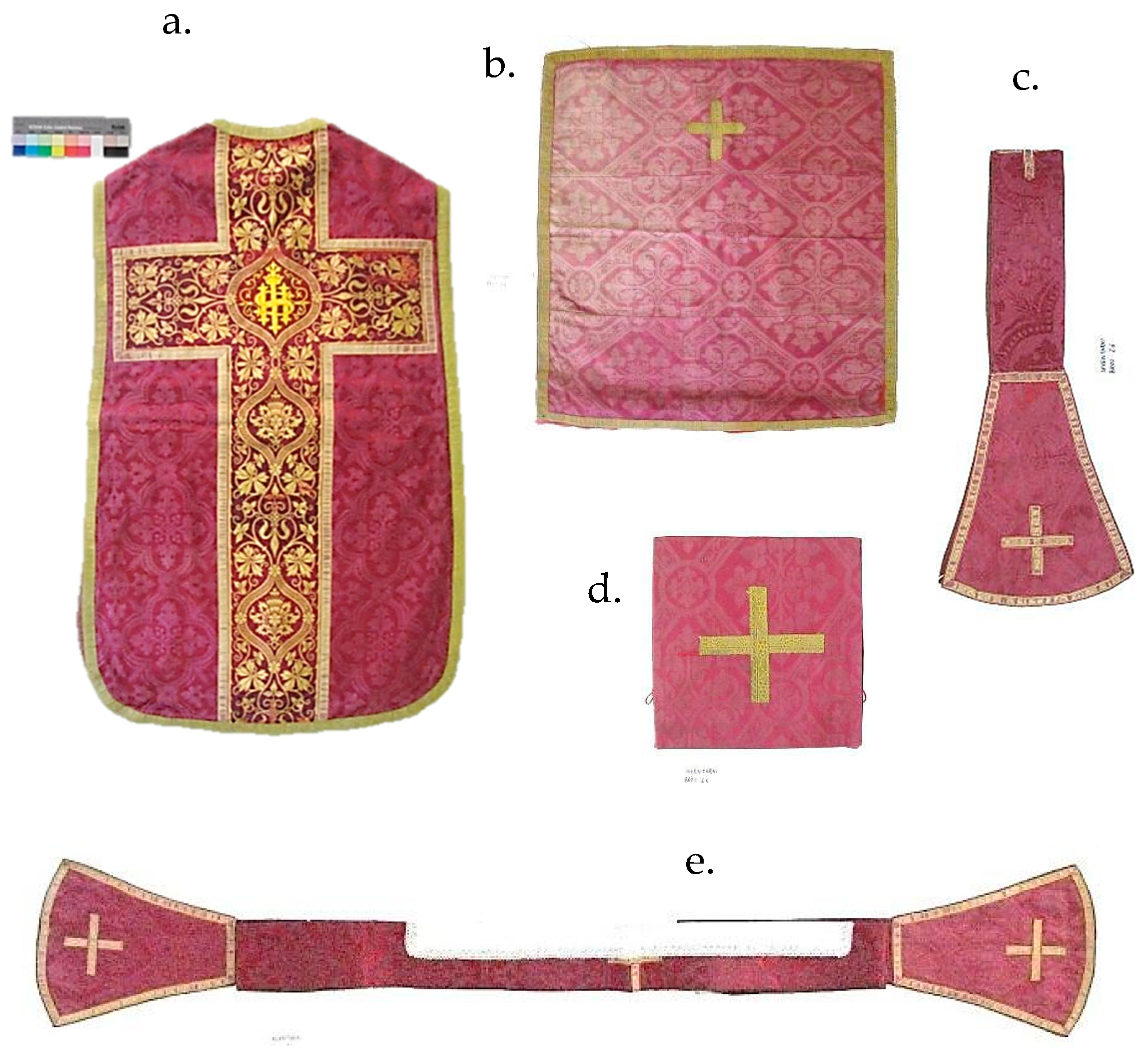
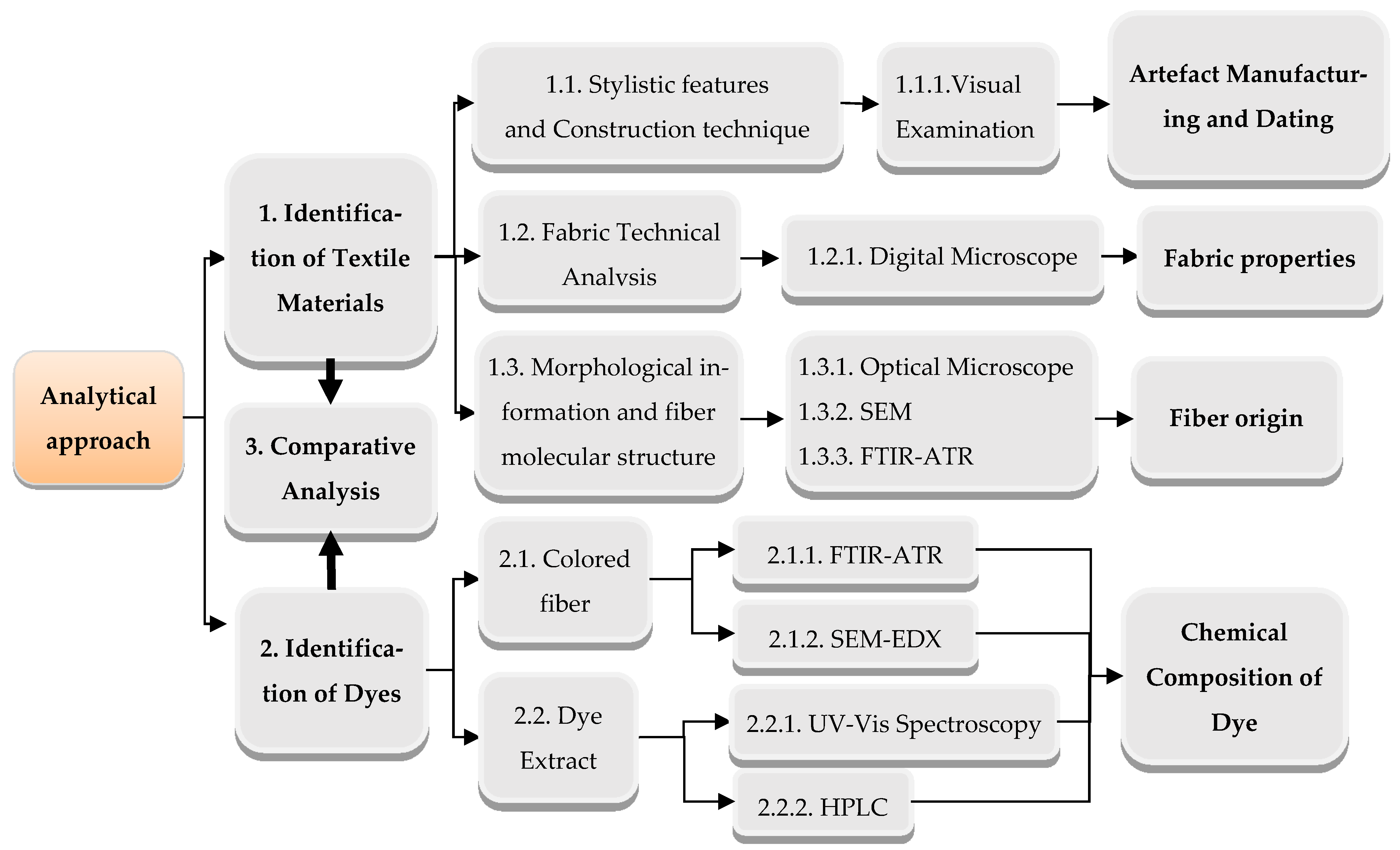
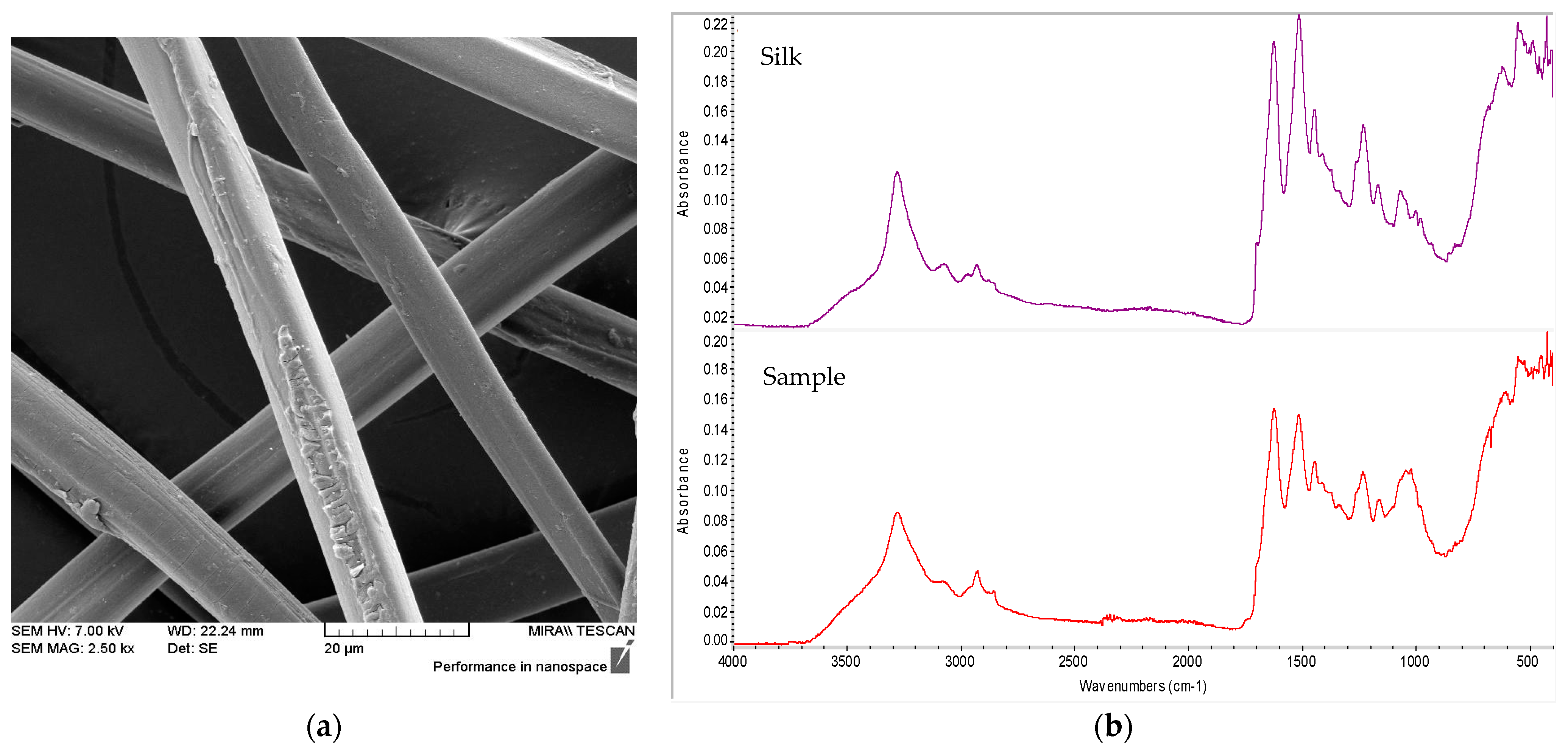
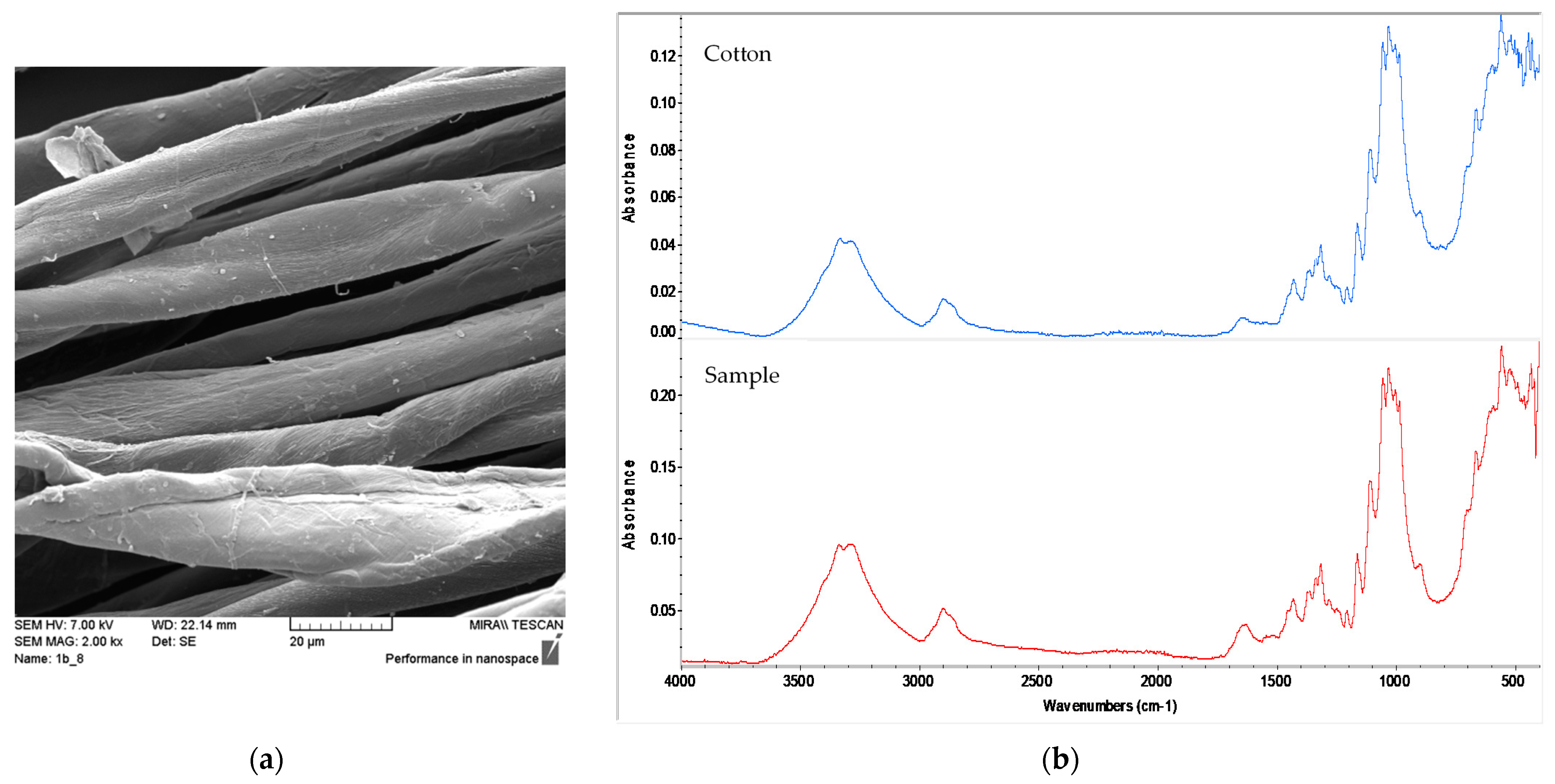
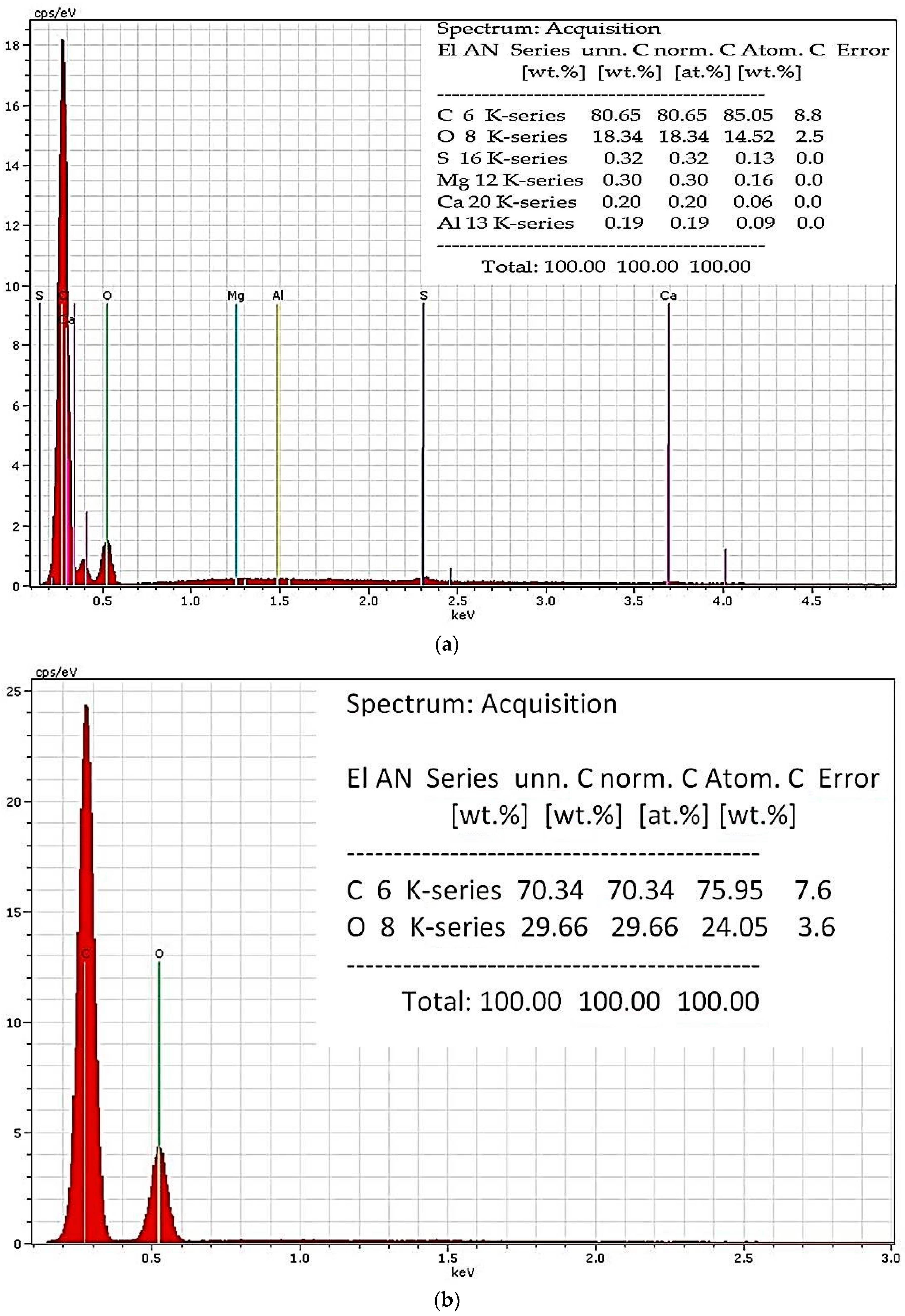
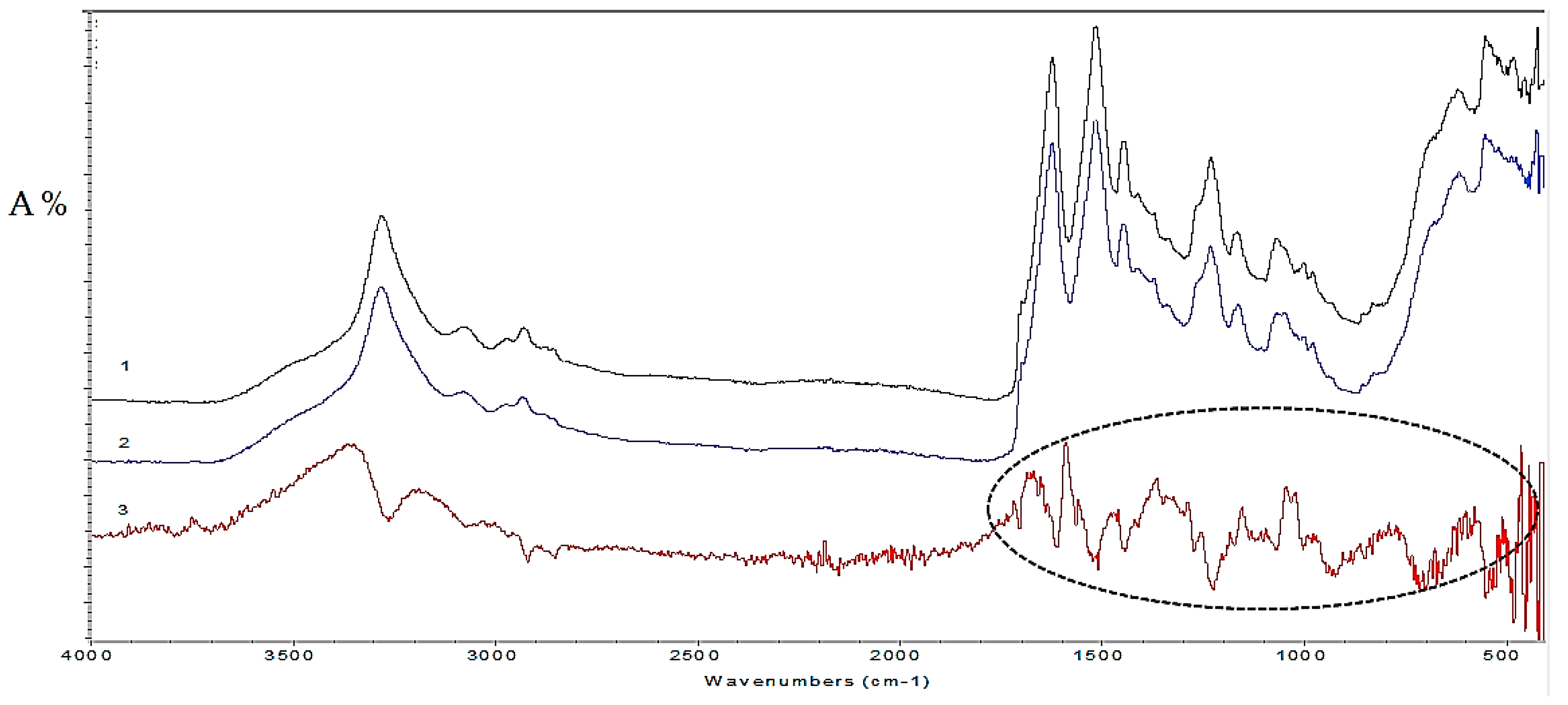
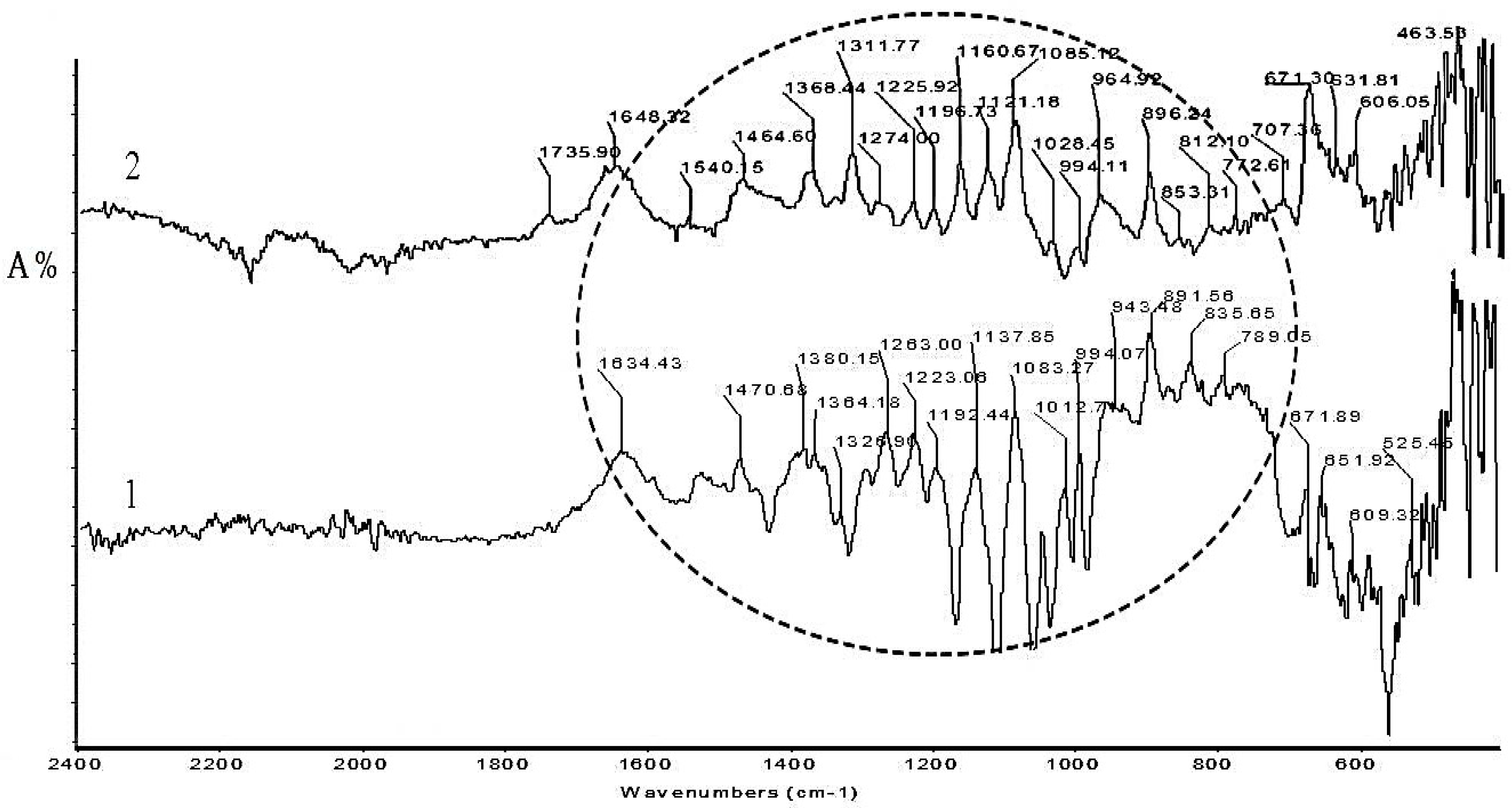
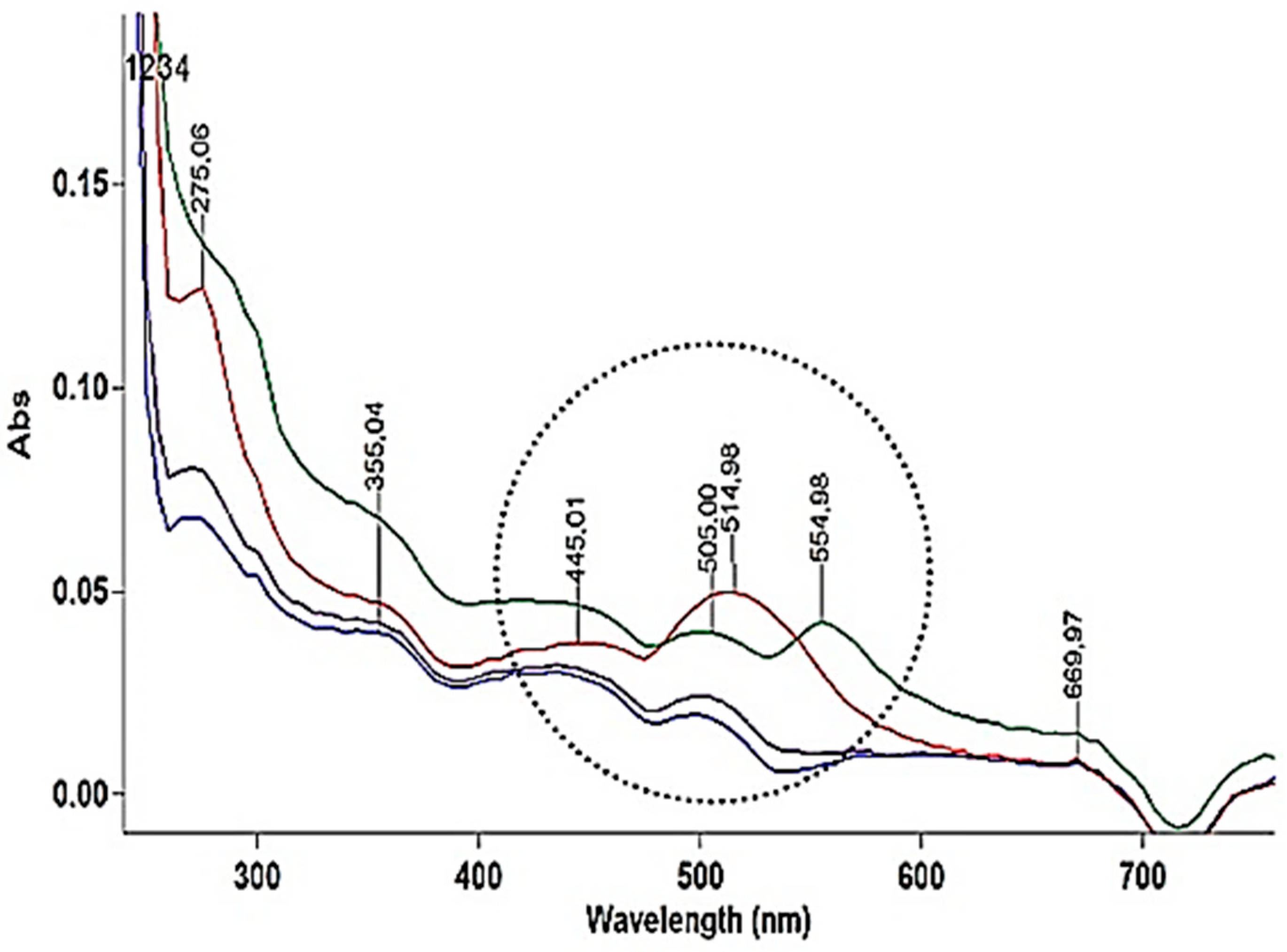
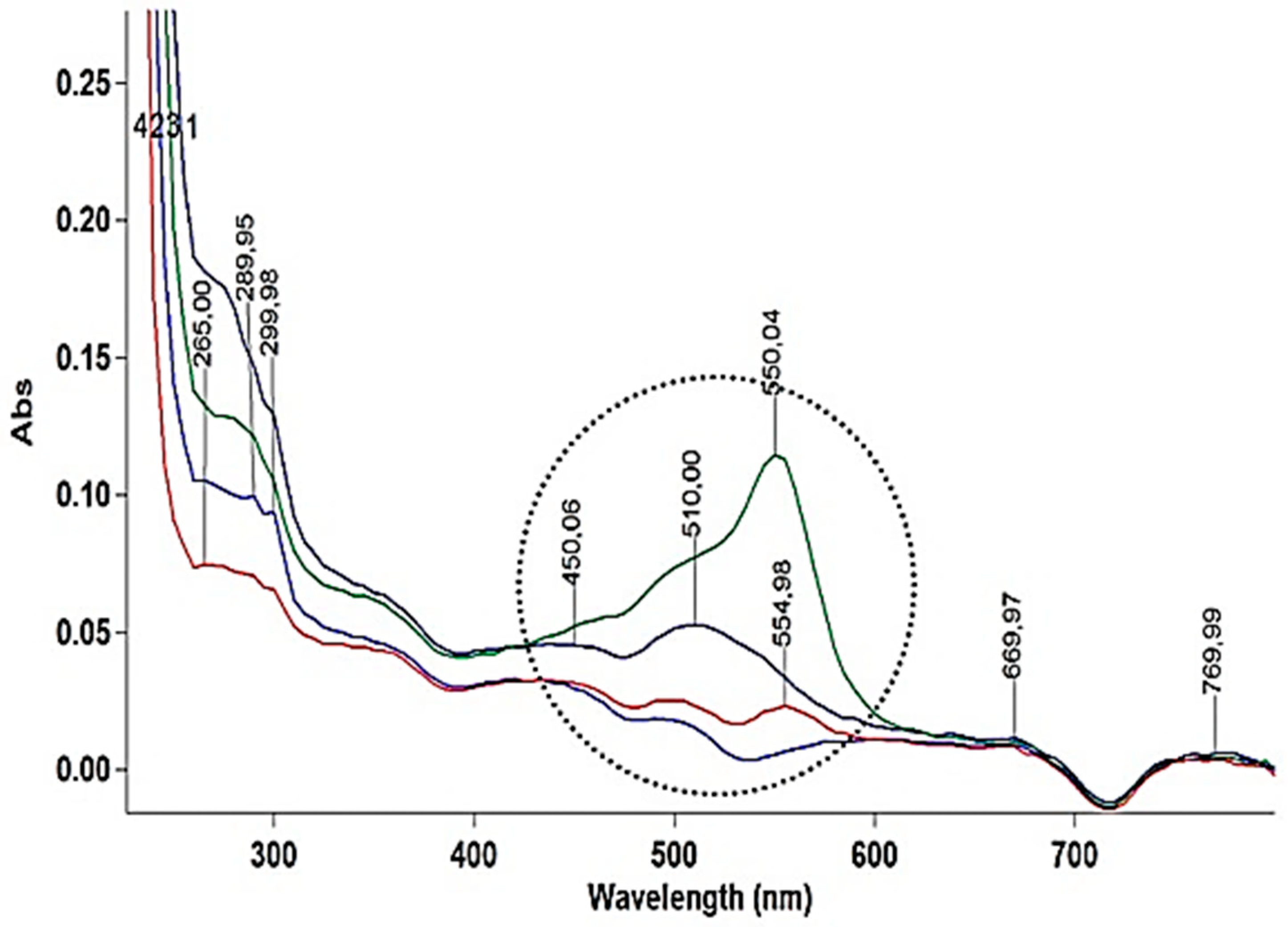
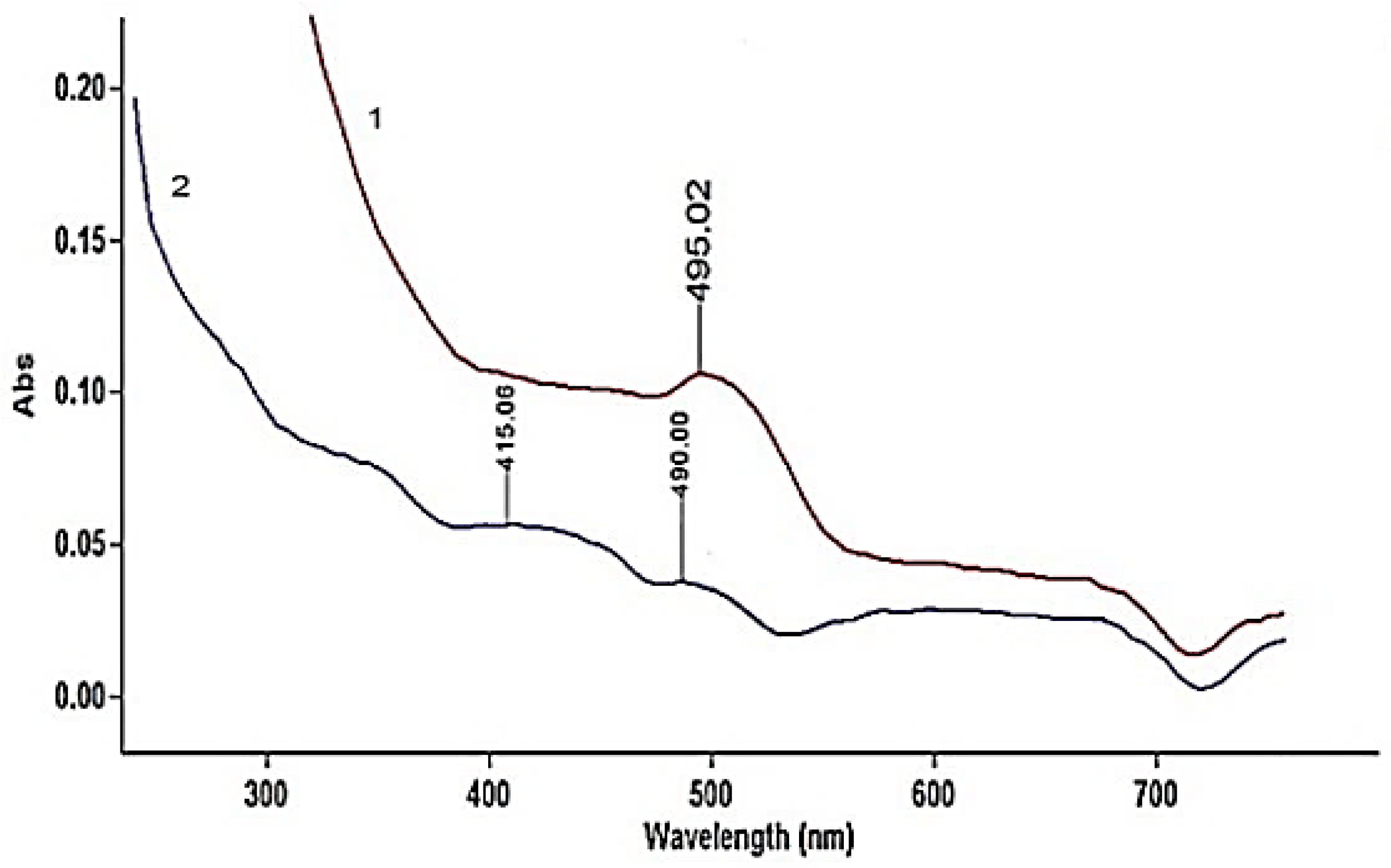
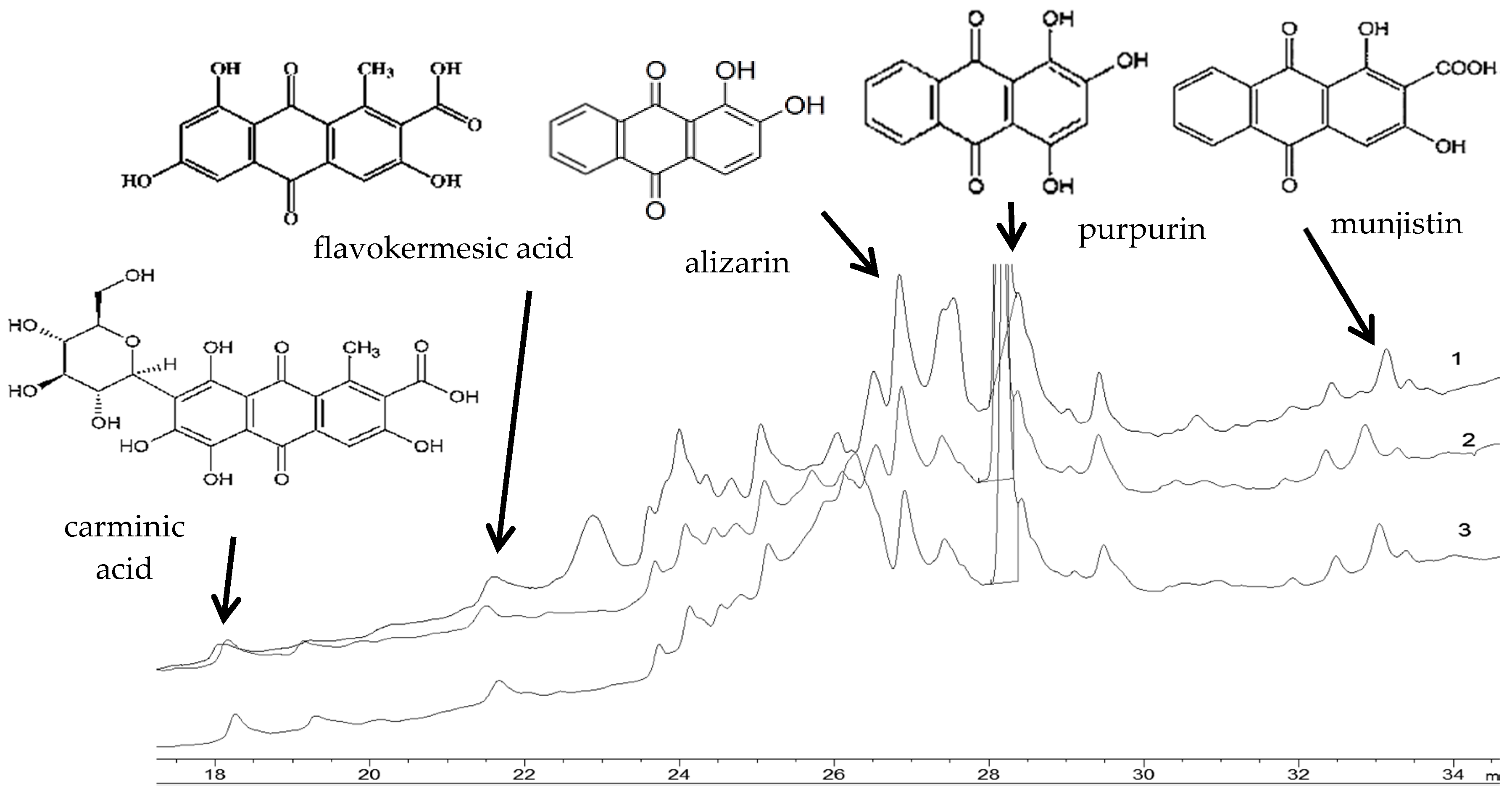
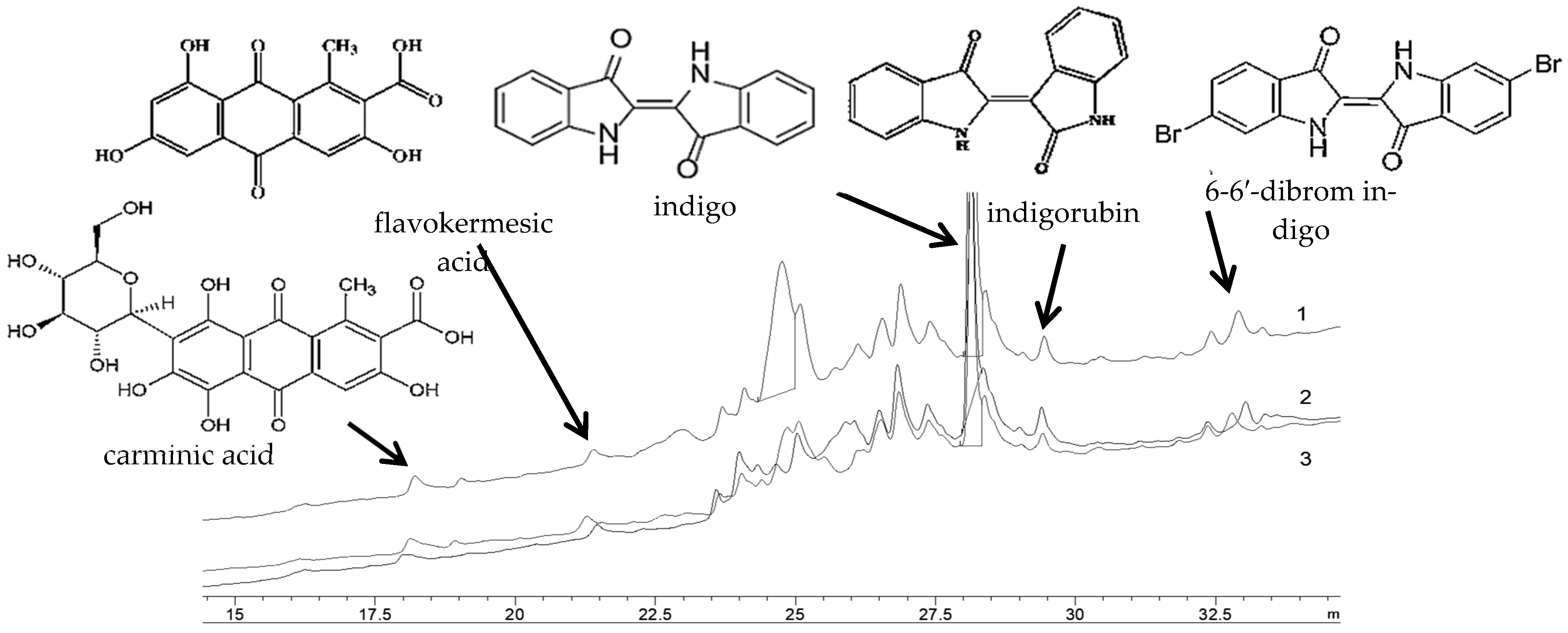
| (a) Chasuble Damask Fabric (Figure 1a) | ||
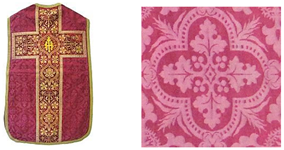 | Sample 1 | red tone silk warp from damask fabric; multifilament yarn spun in the s-direction |
| Sample 2 | red tone cotton weft; 2 s-spun yarns plied in the z-direction | |
| (b) Velum Damask Fabric (Figure 1b) | ||
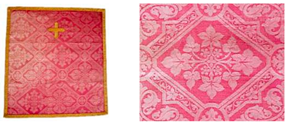 | Sample 3 | red tone silk warp from damask fabric; multifilament yarn spun in the s-direction |
| Sample 4 | red tone cotton weft; z-spun | |
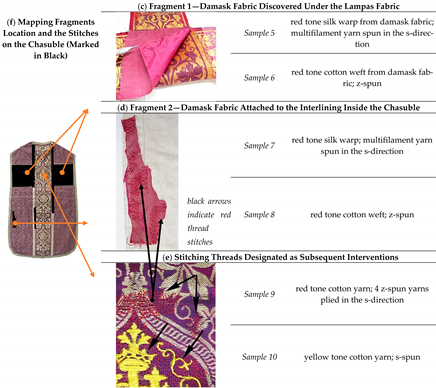 | ||
| Material | Type of Weave | Fabric Density (Threads/cm) | Fibre Identification | ||
|---|---|---|---|---|---|
| Warp * | Weft ** | Warp * | Weft ** | ||
| Chasuble | Classic damask in five-end satin, (tal. Damasco classico) 1 | 114 | 28 | Silk | Cotton |
| Velum | Damask woven in combination of eight-end satin and weft-faced twill (tal. Damasco di Lione) | 64 | 36 | Silk | Cotton |
| Fragment 1 | Damask woven in combination of eight-end satin and weft-faced twill (tal. Damasco di Lione) | 64 | 36 | Silk | Cotton |
| Fragment 2 | Damask woven in combination of eight-end satin and weft-faced twill (tal. Damasco di Lione) | 64 | 36 | Silk | Cotton |
| High-Performance Liquid Chromatography | ||
|---|---|---|
| Sample | Rt. Time (min) | Compound |
| Sample 1 | 26.84 | alizarin |
| 28.14 | purpurin | |
| 33 | pseudopurpurin or munjistin | |
| 18 | carminic acid | |
| 21 | flavokermesic acid | |
| Samples 3, 5, 7 | 26.85 | alizarine |
| 28.15 | purpurine | |
| 33 | pseudopurpurin or munjistin | |
| 18 | carminic acid | |
| 21 | flavokermesic acid | |
| Samples 2, 4 | 28.2 | indigotin |
| 29.40 | indigorubin | |
| 33 | dibromindigo | |
| Samples 6, 8 | 18 | carminic acid |
| 21 | flavokermesic acid | |
| Material | Sample | Identified Dyes |
|---|---|---|
| Chasuble | Sample 1 | Madder (Rubia tinctorum L.), Cochineal (Dactylopius coccus) |
| Sample 2 | Tyrian purple (Murex trunculus), Cochineal (Dactylopius coccus) | |
| Velum | Sample 3 | Madder (Rubia tinctorum L.), Cochineal (Dactylopius coccus) |
| Sample 4 | Tyrian purple (Murex trunculus), Cochineal (Dactylopius coccus) | |
| Fragment 1 | Sample 5 | Madder (Rubia tinctorum L.), Cochineal (Dactylopius coccus) |
| Sample 6 | Tyrian purple (Murex trunculus), Cochineal (Dactylopius coccus) | |
| Fragment 2 | Sample 7 | Madder (Rubia tinctorum L.), Cochineal (Dactylopius coccus) |
| Sample 8 | Tyrian purple (Murex trunculus), Cochineal (Dactylopius coccus) | |
| Old repairs with stitches | Sample 9 | Synthetic dye |
| Sample 10 | Synthetic dye |
Publisher’s Note: MDPI stays neutral with regard to jurisdictional claims in published maps and institutional affiliations. |
© 2021 by the authors. Licensee MDPI, Basel, Switzerland. This article is an open access article distributed under the terms and conditions of the Creative Commons Attribution (CC BY) license (https://creativecommons.org/licenses/by/4.0/).
Share and Cite
Jemo, D.; Parac-Osterman, D. Revealing the Origin: The Secrets of Textile Fragments Hidden Inside the 19th Century Chasuble from Dubrovnik. Materials 2021, 14, 4650. https://doi.org/10.3390/ma14164650
Jemo D, Parac-Osterman D. Revealing the Origin: The Secrets of Textile Fragments Hidden Inside the 19th Century Chasuble from Dubrovnik. Materials. 2021; 14(16):4650. https://doi.org/10.3390/ma14164650
Chicago/Turabian StyleJemo, Danijela, and Djurdjica Parac-Osterman. 2021. "Revealing the Origin: The Secrets of Textile Fragments Hidden Inside the 19th Century Chasuble from Dubrovnik" Materials 14, no. 16: 4650. https://doi.org/10.3390/ma14164650
APA StyleJemo, D., & Parac-Osterman, D. (2021). Revealing the Origin: The Secrets of Textile Fragments Hidden Inside the 19th Century Chasuble from Dubrovnik. Materials, 14(16), 4650. https://doi.org/10.3390/ma14164650






